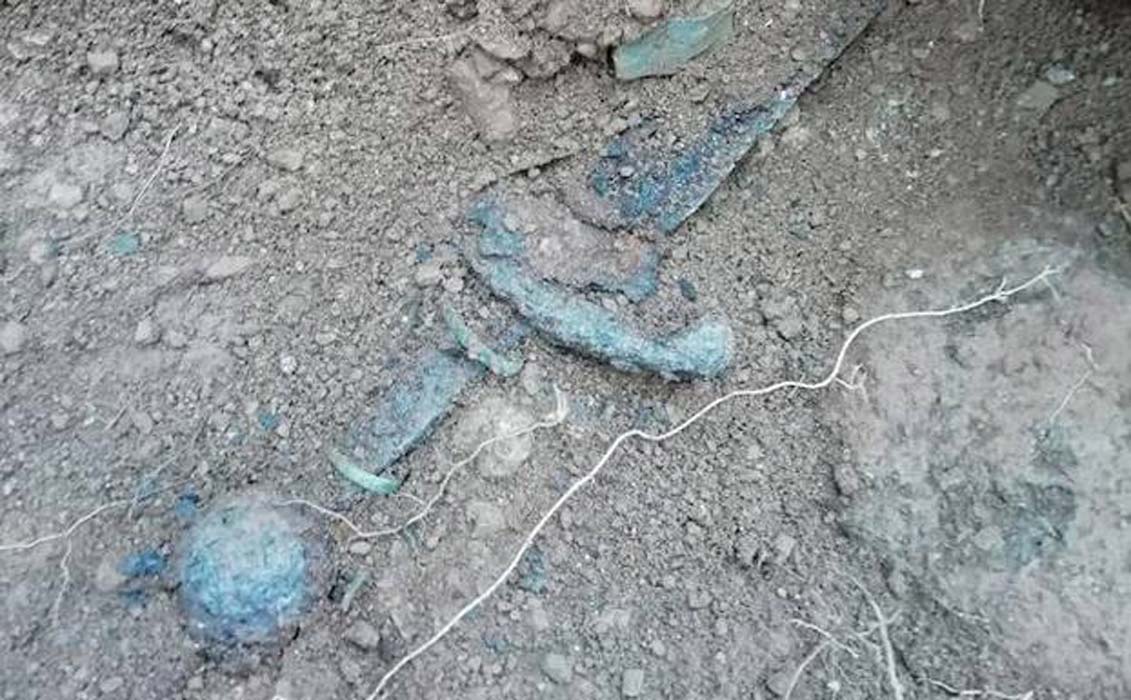Medieval Sword from the War of the Two Peters Unearthed In Spanish Castle
Archaeologists have made a rare discovery during their second season of work at a Medieval castle in Aín, Castellón, Spain. The have unearthed a 700-year-old sword that is in a remarkable state. The style suggests it dates to the time of a significant Spanish historical event - the War of the Two Peters.
According to DiariodeAvisos, even the archaeological team was surprised by the find and they have said a discovery of this type of artifact in such a beautiful state of preservation is “extremely unusual.”
The sword measures 94 cm (37 inches) long, has a guard 13 cm (5.12 inches) wide, and a spherical pommel. There are two bronze rivets on the hilt and a groove down the center of the blade. The local population has also taken an interest in the well-crafted sword and Las Provincias reports they have even given the artifact a nickname – ‘Espadana’ (which may be translated as ‘noble sword.’)
- Joyeuse: The Legendary Sword of Charlemagne
- Espada de Anibal - The Mystery Behind Hannibal’s Magical Lost Sword
- The Mysterious Stories of Castle Ponferrada: Knights Templar, the Camino de Santiago and the lost Sword of Jacques de Molay

The Medieval Spanish sword has a spherical pommel, two bronze rivets on the hilt, and a groove down the center of the blade. (COPE)
The sword was found amongst the ruins of Benalí Castle. The castle has Muslim origins and was one of the most important locations during the Moorish rebellion in the area in the 16th century. The most interesting aspects of the site today are a tower and scattered walled enclosures.

Ruins of the Aín castle where the Medieval sword was discovered. (Falconaumanni/CC BY SA 3.0)
Mediterráneo reports archaeologists discovered the sword under a mortar floor in a large room with a hearth and a work bench. They made the discovery while they were working on their second phase of a project aimed at strengthening the southwest sector of the castle wall. This is meant to stop the deterioration of the monument and guarantee its stability, with the hopes of making the castle a first-rate historic site.
- Chinese Votive Sword Found in Georgia suggests Pre-Columbian Chinese travel to North America
- The Heroic Story of Roland: A Valiant Knight With an Unbreakable Sword
- The Spanish Inquisition: The Truth behind the Dark Legend (Part I)

The sword was discovered under a mortar floor in a large room with a hearth and a work bench. (Mediterráneo)
The archaeological context and style of the sword both suggest that it was created during the 14th century and can thank it’s well-preserved state on damage to the castle during the War of the Two Peters (1356-1367).
The War of the Two Peters was a series of battles between King Peter of Castile (Peter ‘the Cruel’ or ‘the Just’ depending on your preference) and King Peter IV of Aragon (Peter ‘the Ceremonious’). Historians say the two men were almost evenly matched and the war ended with no clear winner. It mainly consisted of a series of border skirmishes in which lands quickly changed hands. The French and the English also played supporting roles in this war - French commander Bertrand du Guesclin supported Henry of Trastámara, who was linked with Peter IV of Aragon, and Peter of Castile had English backing (which has led some to count the War of Two Peters as an extension of the Hundred Years’ War too). The Black Death, drought, and a plague of locusts all added to the hardships of this war.

Left: Peter of Castile (Public Domain) Right: Peter IV of Aragon. (Public Domain)
Top Image: The remarkably well-preserved Medieval sword found in the ruins of a Spanish castle. Source: Las Provincias



















